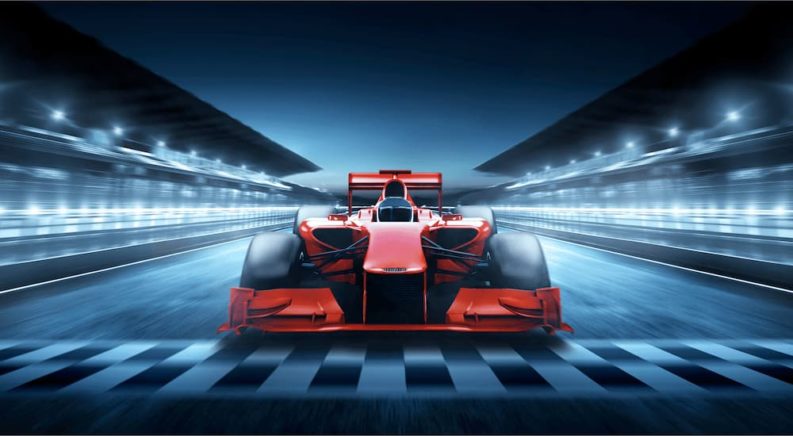Long overshadowed in America by homegrown motorsports like NASCAR and IndyCar, Formula 1 has seen a huge bump in popularity amongst American viewers in the last few years. While the high-octane racing series has long been a success in the international market, its rise in the US can be attributed to a few key factors. The Formula One Group, responsible for promoting the sport, was purchased by American firm Liberty Media in 2017. The company made a major effort to make the sport more accessible to American viewers by penning a $90 million broadcasting deal with ESPN. The hit Netflix documentary series Drive to Survive––which became a favorite of many during pandemic-era lockdowns––also plays a major role, with a slick, episodic approach to the Formula 1 season that injects some well-appreciated narrative and drama into the sport. The results speak for themselves, with Formula 1 now averaging 1.4 million viewers per race, up from fewer than 600,000 in 2018. It’s the first time the racing series has managed to draw more than a million viewers per race, which speaks to the growing popularity of the sport on American soil.
Starting this year, the US will host more Formula 1 Grand Prix races than any other country on the planet, with races scheduled in Texas, Miami, and Las Vegas. It’s an encouraging sign for Formula 1’s future, but the bid to appeal to this new crop of viewers is missing one key ingredient: a homegrown competitor. Germans can cheer for Mercedes-AMG, and the British have both McLaren and Aston Martin to root for. The Italians are equally spoiled with Ferrari and Alfa Romeo in the lineup, and even France is represented with Renault. A visit to any used Ford dealer is sure to turn up a number of intriguing, performance-inspired models to choose from, but America’s most storied auto brand is conspicuously absent from racing’s biggest stage.
Is the Blue Oval Rejoining Formula 1?
That could soon change with recent reports that Detroit’s Blue Oval may team with perennial Formula 1 winner Red Bull Racing starting in the 2026 season. Red Bull will likely be seeking a new power unit partner after its current deal with Honda expires at the end of 2025, and Ford seems ready to jump into the fray. Ford is no stranger to the Formula 1 scene, having famously helped to design one of the sport’s most storied engines––the Cosworth DFV––which reigned supreme throughout much of the 1960s, 1970s, and 1980s.
Ford last participated in the Formula 1 scene in 2004 when it owned Jaguar, but a Red Bull pairing could thrust the brand into the spotlight and allow it to up its profile amongst American Formula 1 fans. With Red Bull committed to developing its own in-house power unit, Ford’s involvement would likely be focused on branding, financial, and technical support. However, it still represents an exciting partnership that speaks to the brand’s own automotive expertise.
While details are still scarce, the announcement is an exciting prospect for those who’d like to see the US gain a little representation on the Formula 1 circuit, and it got us thinking about Ford’s own high-performance legacy. As we wait to see how a potential Red Bull/Ford collaboration progresses, we thought it would be the perfect time to look at Ford’s Formula 1 history and see how the automaker has left its mark on the world of motorsports. Join us as we delve into the history of the legendary Cosworth DFV and see how Ford’s history could give us a blueprint of things to come.
Cosworth Allows Lotus to Bloom
Founded in London in 1958, Cosworth is one of the preeminent names in high-performance racing. The automotive engineering company has notched over 176 wins as a Formula 1 engine supplier, securing third place behind Ferrari and Mercedes. While the brand has produced no shortage of impressive engines in its time, it’s the Cosworth DFV that truly earned the company its lofty reputation. The DFV––short for double four valve––is one of the dominant engines in the history of Formula 1 and could be found under the hood of almost every Formula 1 car over its three-decade run of unmatched dominance.
The Cosworth DFV traces its Formula 1 history back to 1965 when the FIA decided to double the racing series’ engine size from 1.5 liters to 3.0 liters. The decision shook up the circuit, with some long-time engine producers leaving Formula 1 instead of designing new engines from scratch. One such producer was Coventry Climax, which had previously supplied engines for Team Lotus. Scrambling to find a replacement for the Coventry Climax-produced engine, Colin Chapman, the owner of Lotus, tapped two of his former employees––Mike Costin and Keith Duckworth––who had since started their own automotive engineering company dubbed Cosworth.
The Cosworth team signed for the project with the aim of producing a race-ready 3.0-liter engine for £100,000, but Chapman still needed to lock down funding. After being turned down by Aston Martin, Chapman approached Ford. It may seem odd for a British racing team to ask an American auto manufacturer for funding. However, Lotus had recently partnered with Ford to produce the Ford Cortina Lotus and had an in with the company. The networking paid off, and Chapman soon had the funding to not only produce a V8 engine for Formula 1, but also a four-cylinder engine for Formula 2.
The DFV Sets a New Pace
The Cosworth DFV made its debut in the third race of the 1967 Formula 1 season at Circuit Zandvoort in the Netherlands. The revolutionary engine made a strong impression right out of the gate, with driver Graham Hill in his Lotus 49 securing a half-second lead for the first 10 laps of the race. While Hill was eventually sidelined with mechanical issues, the Cosworth DFV still had a heck of a day, with Hill’s Lotus teammate Jim Clark winning the race in his own DFV-powered car.
Cosworth continued to deal with reliability problems over the rest of the 1967 season, but Clark still placed third in that year’s Drivers’ Championship. It was an impressive debut for the DFV engine, and Ford was encouraged by the early success. In fact, Ford’s British PR chief, Walter Hayes, was so encouraged that he sought to expand the DFV’s use outside of Team Lotus. This might seem like an odd move from a relative newcomer to the Formula 1 scene. Still, Hayes saw the rest of the field as either unreliable (Maserati and Weslake), too heavy (Honda), or too underpowered (Ferrari), giving Ford a niche to fill with the Cosworth DFV.
Hayes made the DFV engine available for sale in late 1967, and the rest is history. Other teams soon scooped up the powerful engine and leveled the playing field in the ultra-competitive Formula 1 scene. Affordable, light, compact, and easy to modify, the Cosworth DFV allowed even the smallest teams to make a big impact on the track. The DFV ushered in a golden age in Formula 1, especially among the British teams that were some of the engine’s earliest adherents, with McLaren, Brabham, March, Hesketh, Lola, and Williams all embracing the DFV design. The engine could be found under the hood of every World Championship race winner in 1969 and 1973, ultimately earning 155 wins in 262 races over a nearly 20-year run from 1967 to 1985.
All Good Things Must End
While a Formula 1 race is won or lost on the track, keeping pace with technological development has always been a critical part of the sport. The Cosworth engine was getting on in years by the late 1970s, but the advent of ground effect aerodynamics allowed the DFV to remain competitive well into its second decade. Venturi tunnels became all the rage in Formula 1 in that era, giving the high-speed racers some much-needed downforce. However, the principle was incompatible with the flat-12 engines that competed with the Cosworth V8, as their bulky designs took up the volume needed for the tunnels. With its V-configuration, the DFV was primed to take advantage of the Venturi effect, which drastically increased vehicles’ cornering and straight-line speed compared to the competition. Big names like Mario Andretti and Nelson Piquet cruised to DFV-powered victories throughout the late 1970s and early 1980s.
The DFV was finally dethroned in the second half of the 1980s with the debut of motorsport’s new kingpin: the 1.5-liter turbocharged engine. While the DFV held on for a couple years due to consistency issues with the new turbocharged engines, the writing was on the wall. In the end, Michele Alboreto would pilot the DFV to its final Formula 1 win at the Detroit Grand Prix in 1983, and the legendary engine set its last laps at the Austrian Grand Prix in 1985. Overall, 375 DFV engines were produced during its historic run, establishing Cosworth in Formula 1 history and becoming one of the biggest success stories in motorsports. Cosworth would introduce DFV-inspired descendants, including the DFY, DFZ, and DFR, throughout the 1980s, but none would have the impact as the innovative original.
Will Ford Reprise Its Storied History?
As Ford ponders a return to the biggest stage in motorsports, the Cosworth DFV provides an inspiring tale of what a plucky outsider can accomplish. That’s not to say Ford is a latecomer in the world of high-stakes racing––one need look no further than 2019’s blockbuster Ford v Ferrari to see just how much of an impact Detroit has had on the international racing scene. But the brand has been conspicuously absent from Formula 1 in recent years. With the league’s meteoric rise among American viewers, now is the perfect time for Ford to invest in the growing sport.
A partnership with perennial contenders Red Bull Racing makes all the sense in the world. With the financial backing and technical expertise of a brand like Ford behind it, Red Bull should have little trouble replicating the success it found in the early 2010s when it won four consecutive Constructors and Drivers World Championships. While it’s hard to predict success before the checkered flag waves, we anticipate big things if Ford decides to make its long-awaited return to Formula 1.





